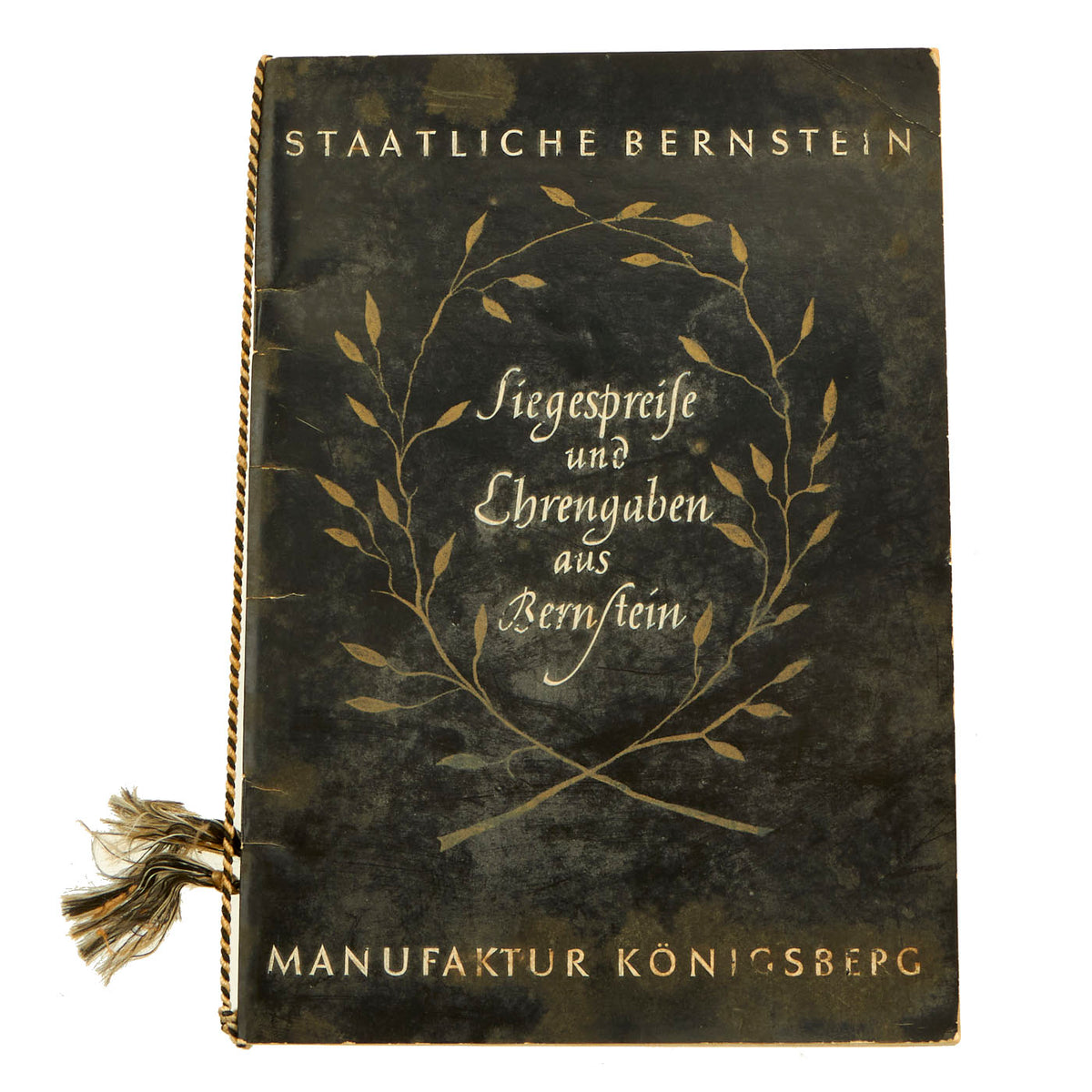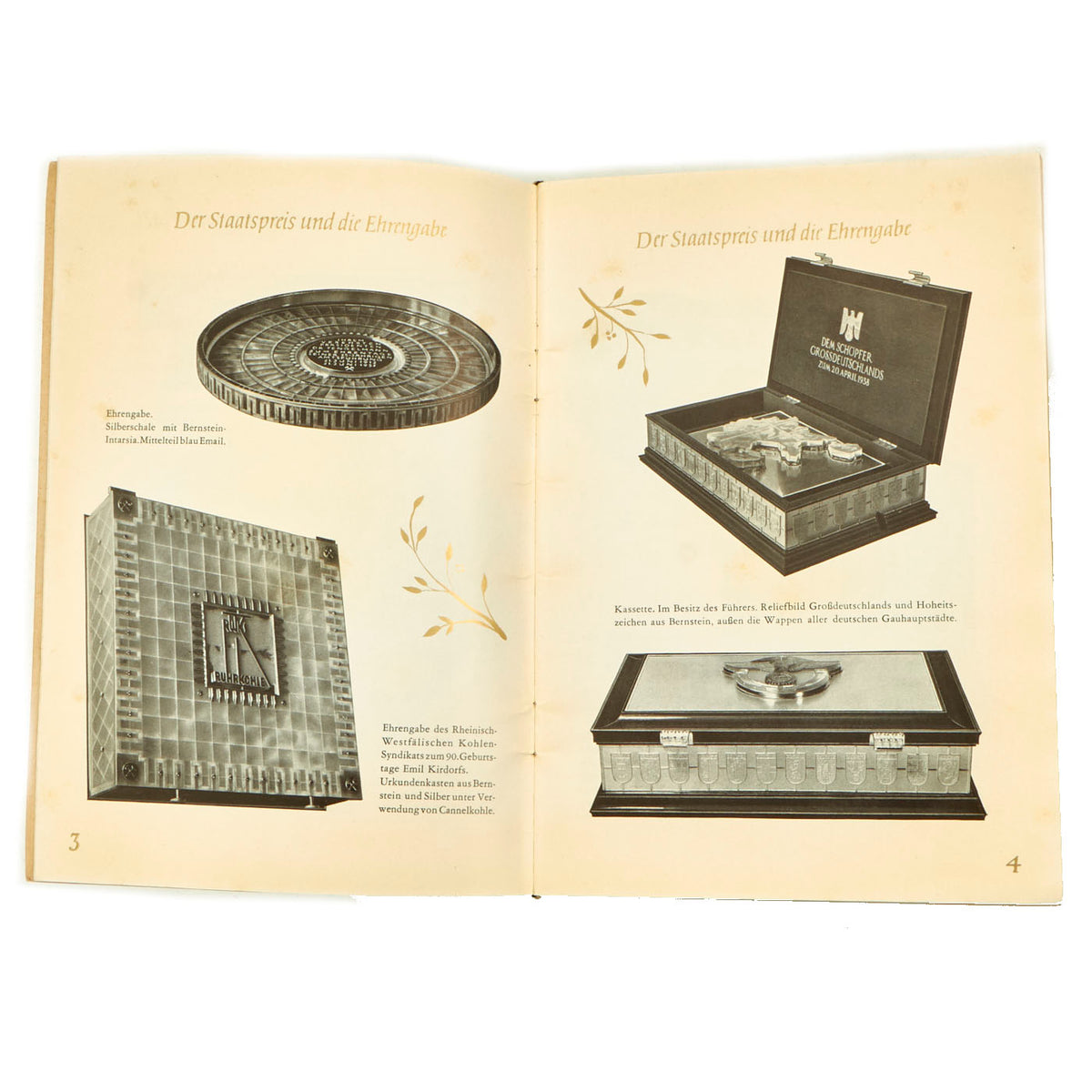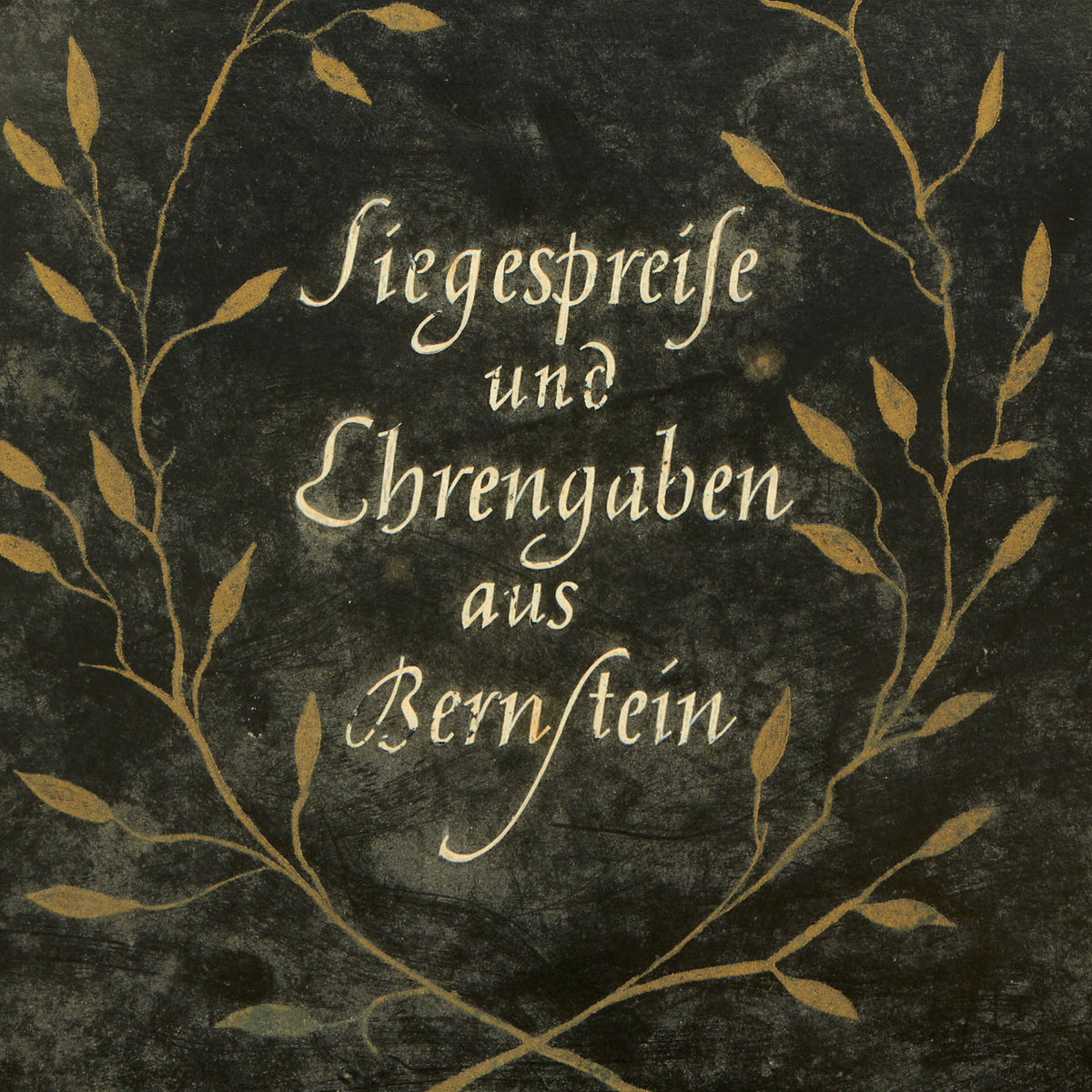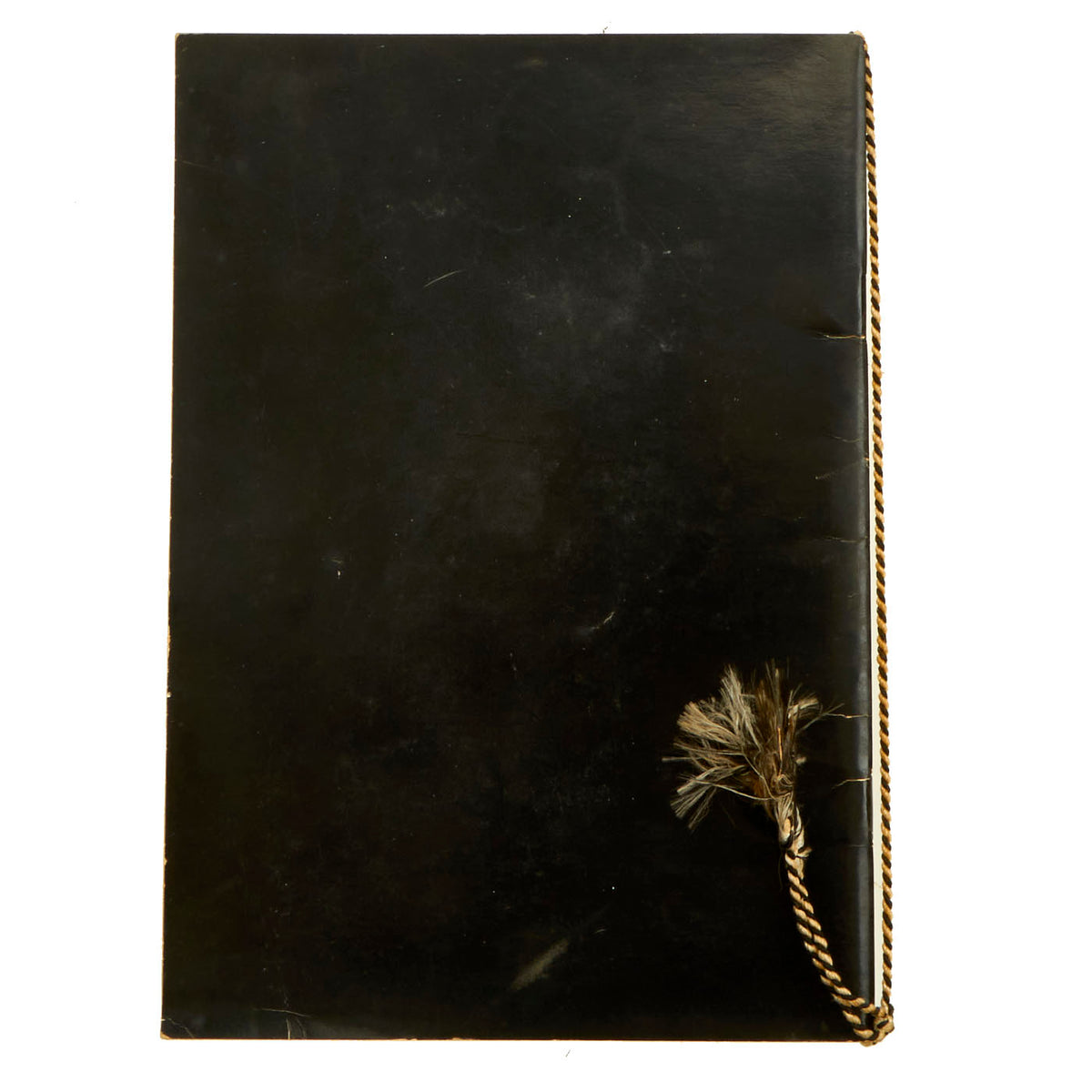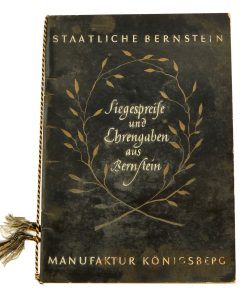Original German WWII Königsberg State Amber Manufactory Prizes and Honor Booklet Original Items
$ 95,00 $ 47,50
Original Item: Only One Available. The State Amber Manufactory was established in Konigsberg in 1926 as a joint-stock company with its branches in Berlin and Danzig.
Amber was extracted in the village Palmnicken, where the initial treatment of the stone was conducted and a smelting shop was located. Konigsberg became the center of end production.
There was a factory with sorting and press shops as well as the Manufactory directorate here. The number of the Manufactory workers was 2650 by the end of the 1930s.
A special attention was given to the quality and high artistic level of amber articles. From the beginning of the 1930s a wide advertising campaign was launched and aimed at promotion of German gold within the country. The “Day of Amber” was celebrated in Palmnicken where huge models of the productions were shown during an elaborate parade.
The Manufactory opened its representative offices in Paris, London, Vienna, Brussels and New York. The articles of the Manufactory gained international acceptance also due to participation in numerous exhibitions where they were repeatedly awarded with high ranking prizes.
The State Amber Manufactory became the largest in the world enterprise for extraction and treatment of amber. A high artistic level of its mass production played a significant role in the promotion of amber articles far beyond the borders of Germany.
This booklet was intended mainly to show examples of the different types of state prizes available at the time, and is titled Siegespreise und Ehrengaben aus Bernstein, or “Victory prizes and honorary gifts made of amber”. The booklet shows a beautiful selection of amber work, especially the prizes as well as honorary gifts and “arts and crafts” items that were made.
The various ranges of the articles produced at the Manufactory were divided into five groups.
The most numerous group included jewelry articles. The other group consisted of household articles. The third consisted of the articles of religious faith. The fourth group involved souvenirs, commemorative medals, sports prizes as well as various badges.
However, the production was not limited to only commercial products. The fifth group included original works of art, sculptures and raised works from amber.
A special significance in making highly artistic items was returning to the traditions of old German craftsmen of the 17th and 18th centuries. For this purpose a famous sculptor Hermann Brachert was invited for the position of an artistic advisor in 1930. His articles conjoined a combination of a harmonious splendor and constructive rationality of the Bauhaus school of design.
The same can be said about Jan Holschuh, Brachert’s follower. After becoming an artistic head of the Manufactory in 1933, he set an aim of widening the production programme and initially setting a high artistic standard for the articles. Under his leadership and on the basis of his designs, the Manufactory started making high quality and expensive household articles along with mass production.
Comes ready to be translated and displayed!
Fast Shipping with Professional Packaging
Thanks to our longstanding association with UPS FedEx DHL, and other major international carriers, we are able to provide a range of shipping options. Our warehouse staff is expertly trained and will wrap your products according to our exact and precise specifications. Prior to shipping, your goods will be thoroughly examined and securely secured. We ship to thousands clients each day across multiple countries. This shows how we're dedicated to be the largest retailer on the internet. Warehouses and distribution centres can be located throughout Europe as well as the USA.
Note: Orders with more than one item will be assigned a processing date depending on the item.
Before shipping before shipping, we'll conduct a thorough inspection of the items you have ordered. Today, the majority of orders will be delivered within 48 hours. The delivery time will be between 3-7 days.
Returns
The stock is dynamic and we cannot completely manage it because multiple stakeholders are involved, including our factory and warehouse. So the actual stock may alter at any time. It's possible that you may not receive your order once the order has been made.
Our policy is valid for a period of 30 days. If you don't receive the product within 30 days, we are not able to issue a refund or an exchange.
You can only return an item if it is unused and in the same state as the day you received it. You must have the item in its original packaging.
Related products
Uncategorized
Uncategorized
Uncategorized
Uncategorized
Uncategorized
Armoured Fighting Vehicles of the World: AFVs of World War One (Hardcover Book) New Made Items
Uncategorized
Uncategorized
Australian WWII Owen MK1 Machine Carbine SMG Custom Fabricated Replica with Sling Original Items
Uncategorized
Uncategorized
Band of Brothers ORIGINAL GERMAN WWII Le. F.H. 18 10.5cm ARTILLERY PIECE Original Items
Uncategorized
Angolan Rebel 1970s era 60mm Inert Display Mortar from Angolan Civil War Original Items
Uncategorized
Uncategorized
Uncategorized
Uncategorized
Uncategorized
Uncategorized
Armored Burgonet Helmet & Polearm from Scottish Castle Leith Hall Circa 1700 Original Items
Uncategorized
Uncategorized
Uncategorized
